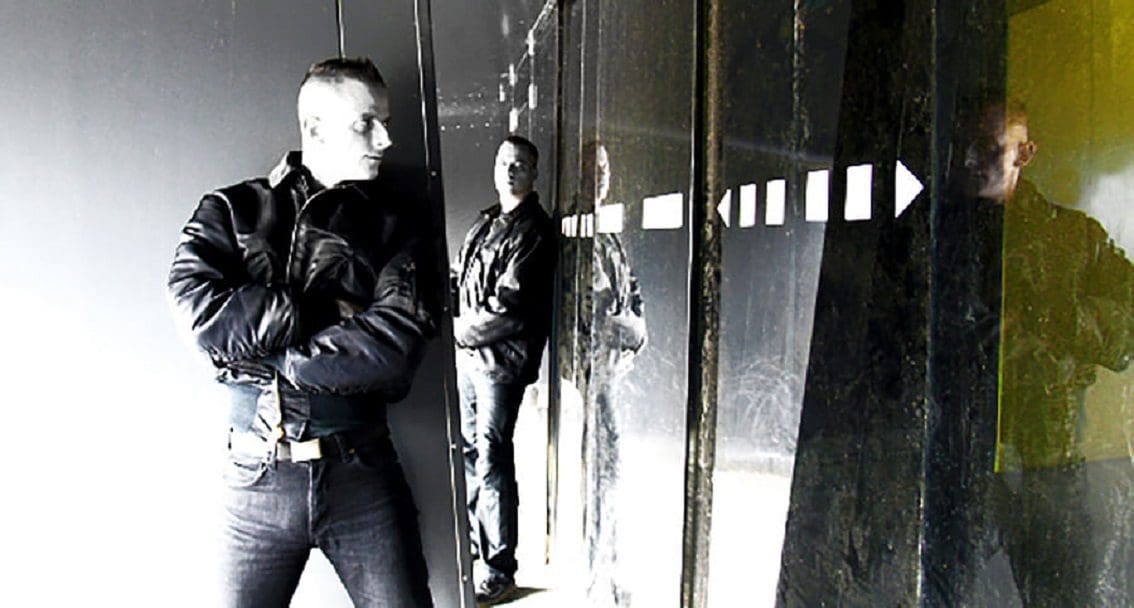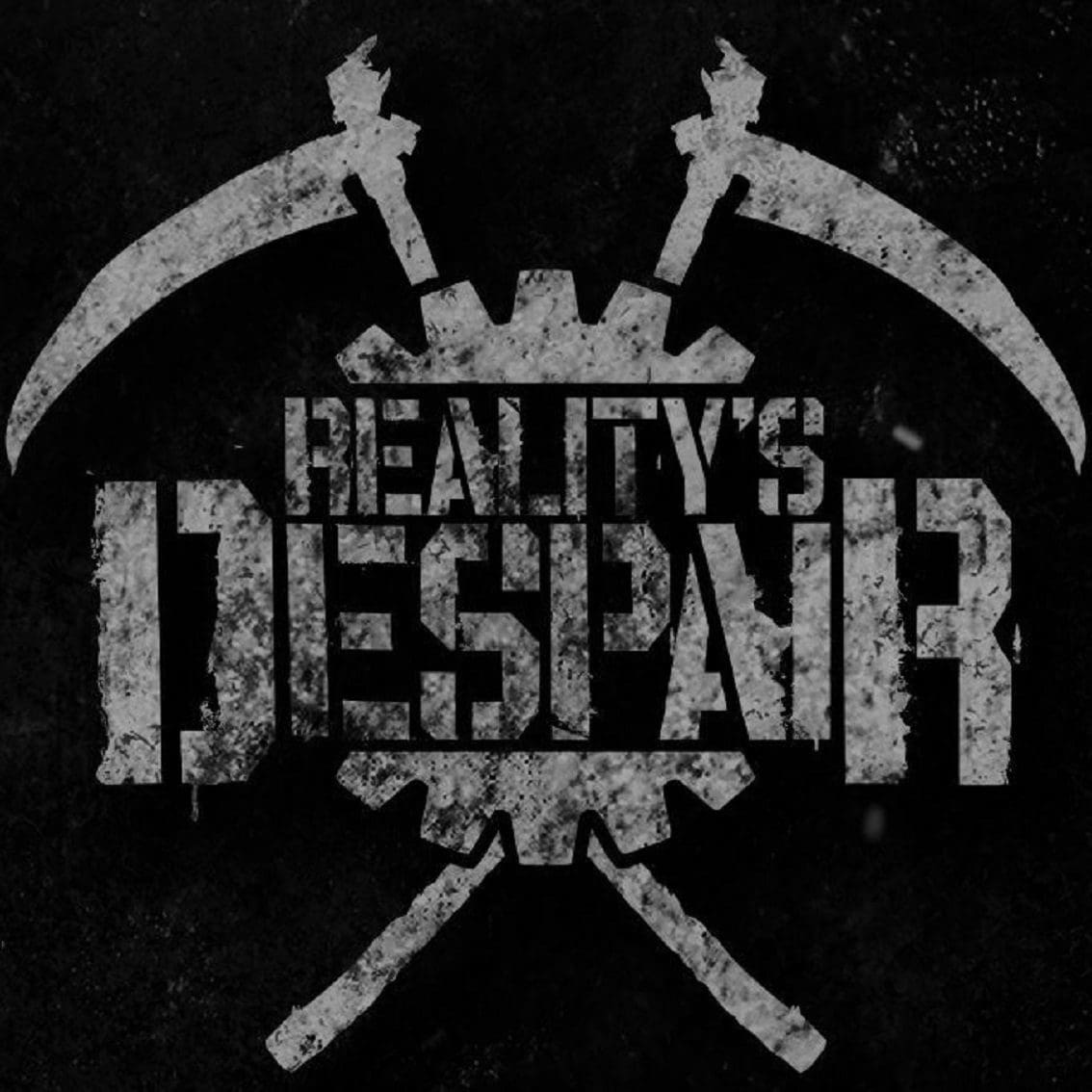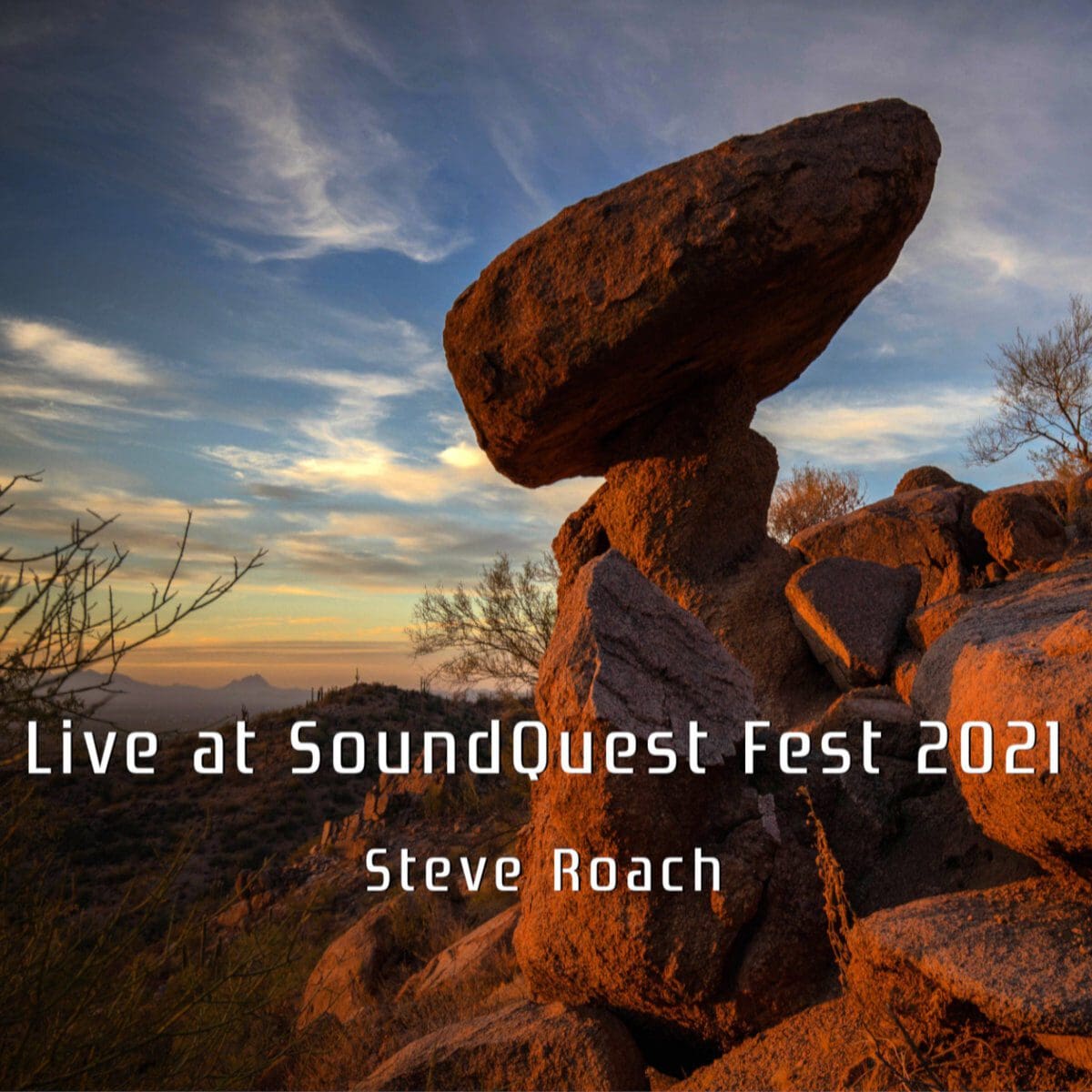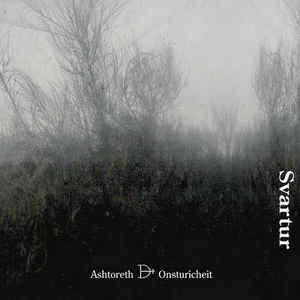‘Click Interview’ with Onsturicheit: ‘It’s Like A Splinter In Our Soul Cause What Kind Of Future Do We Give To Our Children’
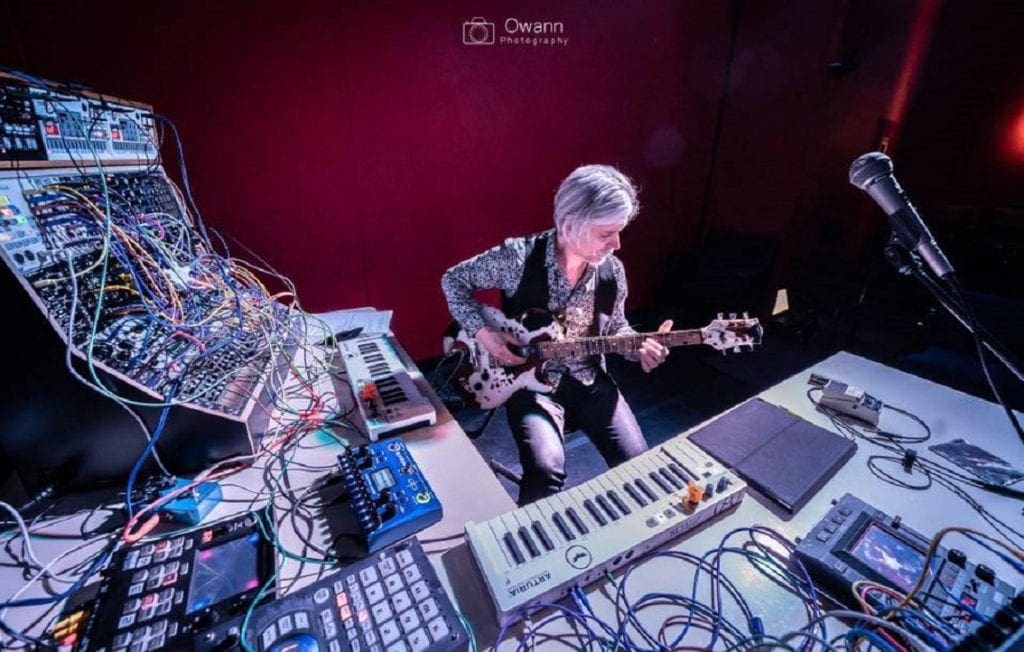

Peter Moorkens is a Belgian artist born in 1965. He started playing acoustic guitar and got later on interested by modular synthesizers. He became involved with different projects dealing with different kinds of music. Onsturicheit is a solo-project, which is mainly driven by the magic of modular synths. Wool-E Discs recently released five albums of Onsturicheit, which are available as a boxset and separately. The work will appeal lovers of ‘krautrock’ and the so-called ‘Berliner school’.
(Courtesy by Inferno Sound Diaries)
Q: Peter, you seem to be involved with very different music projects for years now. Can you briefly give us a summary and how do you explain this eclecticism?
Peter: I’ve been collecting music since I was 10 years old. Mostly Beatles, Pink Floyd and Hawkwind. Then Idiscovered Klaus Schulze and my dream was to do that sort of music. My mother had an organ and my sister played piano, so I exorcised my ideas on those tools, but nothing seriously. Then my mom bought a Roland JX-3P, but she couldn’t handle it so she gave it to me. I was moving into other areas at that time. I became a singer in a band called Smeurebreud (demo here: https://soundcloud.com/electric-loopstation/my-doggys-gone-111984 ) which was into folk stuff with English and Dutch lyrics. We had a lot of fun, did a lot of jamming and improvising.
Moving from Antwerp to Ghent changed a lot of thing. I joined hands together with Jeroen Saegeman to set The Moonfolks, which was a vehicle for experimental rock were you could play any instrument you wanted. I sang, learned to play guitar, tenor sax, synthesizer, harp, etc. At some point I bought a 4-track cassette recorder and set up Electric Loopstation. It was a solo-project with special guests, very cinematic music and definitely spacy (music here: https://archive.org/search.php?query=electric%20loopstation Jeroen from The Moonfolks moved on with Groom (Dublin psychedelic band) and his own Walpurgis Family and I became the singer of Daisy And The Diving Duck; a psychedelic blues band who jammed like hell. I sang and played sax and occasionally some synths. The two splendid guitarists started their own projects, now leading Mother T And The Chicks and The Golden Showers.
Electric Loopstation still exists, but actually there’s nothing new in the pipeline. So to make it short, I jammed a lot with bands and I jammed on my own; it was all the same. You record a jam, you overdub a jam and in the end you got a track or a song. Sometimes everything was live, using loops etc.
Q: How did you finally come to set up Onsturicheit and what have been the initial purpose(s) to experiment with this solo-project?
Peter: At some point I wasn’t playing in any band, but I wanted to be able to play live on my own. I gathered so much gear that I used for Electric Loopstation and was progressively moving towards more and more electronic music with less guitar and no vocals. I slimmed things down and made a practical setup that I could take on the road to play live on my own. Onsturicheit was born.
Q: Tell us a bit more about your way of composing and the sound properly speaking, which is mainly driven by modular synthesizers?
Peter: Modular synthesizers perfectly fit to the name Onsturicheit because in medieval Dutch it means something that is untamable, something with a will of his own, something wild and that’s exactly what it is. For every gig I reconstruct my modular system. This way I have to rethink which voices I will be using, how to modulate them, etc. I make patches, see how the voices fit -or not fit together. Then a week or so before the gig I try out new melodies, record samples, etc. I write the ideas in a little book. Those ideas turn into scenes. A scene is mostly an introduction (soundscapes you make live or samples) followed by 2 or 3 sequences that will be the key melody. Then I program some Korg Volca’s. I use Kick and two Samples (you can have up to 8 different preprogrammed drumloops). I write down suggestions for building up the soundscapes using samples, the key it is in, the beats per minute, which programs on the Volca’s that fit in, some tricks, etc. At some point I play and recorded the live set at home. I listen to it the day after and change some bits here and there. Sometimes I decide the evening before the gig to bring in a guitar or something completely different (https://soundcloud.com/littlantenna/postx250519-onsturicheit ) and hope that everything works out fine. It never is, but that’s modular and some experience to take different roads or just jam when you’ve ran out of scene’s you have prepared.
Q: You last year (re)-released five (!) albums on Wool-E Discs, which are available as limited box format! Can we speak about a conceptual work? Can you give us a bit more details about the concept, composition and recording of the works?
Peter: Dimitri from Wool-E-Discs is a sort of Maecenas for us creative people. When he hears something he likes, he will give it a physical release. In my case a cassette called “Waan”. It was a very limited edition, but enough to get some attention from the underground press. I was lucky to get a very good review from Gonzo Circus. So a second cassette was released and I again got good reviews. I also moved on recording every jam prior to gigs. So I had plenty of material. Dimitri came with the idea to release the two tapes plus 3 new discs in a CD box. The CD’s are also available without the box.
“Waan” was a jam of 53 minutes with 6 Korg Volca’s. I didn’t like it a lot, but something special was hidden. I left it alone for a year before I heard it again. I liked the vocal samples a lot. I used them in the Volca Sample, a drum sequencer. I reworked the original piece. Extra synthesizers, some guitar, more samples, etc were added. The result is still the best thing I ever did.
After that there was “Angstzweet”. The second album is always a difficult one. It can’t be the same and it must be better. Hence the title. It was more dark in a way, more unsure and the beginning of the my modular adventure. Angst is a bit a tribute to Suzanne Ciani. You can hear sounds that come close the Buchla Synth she uses. These tracks were all live jams. The track “Rilling” was recorded for my Youtube channel (https://www.youtube.com/watch?v=0qEJrkG9Yzo ). “Zweet” is back to the Korg Volca’s and the microbrute. This track was a live preparation for a gig at the annual BBQ of The Blue Room (gathering of artists and record shop holders, etc.). In fact thanks to the platform the Blue Room gave me things started to happen outside the living room.
On Record Store Day 2017, Wool_E-Shop invited me to play a short live set. I recorded it and named it “Denkbeeldig Tentenkamp” because I played under something resembling a tent and in Brussels there were tents full of refugees. Also the words ‘denkbeeldig’, ‘illusie’ and ‘hondsdol’ were used in my Volca sampler. The music I played was a mix of both cassette releases. I already had the melodies and improvised around them. The other tracks on the album are from Joost Carpentier, a Blue Room visitor and artist (see DREUN box https://belgianneumusik.be/album/wed022-bnm007-10111-ambient-darkambient-drone-soundscapes ) who also did the mastering. I asked him to vivisect and reconstruct the live track and make them his own. Something different and beautiful came out. More from us will come in the future. Hence the title Impressions.
The fourth album ‘In De Nevelen’ was a result of a collaboration with Glenn Dick (Find Hope In Darkness). We recorded some jam sessions, sort of modular against guitar loops. At a certain point I took my baritone guitar and we played a track of 50 minutes with just guitars and some samples. Unfortunately the guitar parts of Glenn were not recorded. When I listened to the recording I found it very calm and spacy so I added some minimal drums and modular synths. I like the end result enough to present it at Dimitri. There are also some hints to the other albums in the samples I used.
The fifth album was a rehearsal for the “Splinter”-sessions at Villa Bota Bruges. I had to make a piece of one hour. I rehearsed it a few times and recorded the jams. The tracks on the album came from two of these sessions. When I played it live, time is relative in my head, so I moved quicker thru all the scene’s that I prepared and doing so reduced the piece to 30 minutes. Since I always make a film to accompany the live music I noticed the movie wasn’t finished so I had to improvise the rest of the set. Patrick Baele filmed the whole set (https://www.youtube.com/watch?v=AyHybA7zYrU&t=1624s ). The tracks on the album develop more slowly and give you time to absorb the music.
Q: The title of the box “Wanneer De Herder Doolt, Zo Dolen De Schapen”, but also the different album- and song titles are pretty intriguing. What’s the hidden meaning behind the titles and is there a link between the titles and music you composed for each of them?
Peter: Translated “When The Shepherd Wanders, So The Sheep Will Wander”. The shepherd is Dimitri from Wool-E-Shop and we are the sheeps and the album tells the story of the flock. Onsturicheit is Dutch, so are all the titles. Since they’re all instrumentals it’s the mood of the piece that influences the tittle. I’m also interested in the history of mentalities and especially old pagan rituals from peasant in the medieval and modern times. Lot of these rituals deal with invisible forces and with the changes of the seasons. I’m very sensitive to those and it directly influences the mood of my live jams (which is the only way to record modular synthesizer music). Afterwards I look for a fitting title.
“Waan” was easy. I had the voice samples and I wrote a story to accompany the tracks. “Angstzweet” was conceived in Autumn, I tend to be more dark and melancholic and fear was/is ruling the world at that moment with all the terrorist assaults going on. There are also quotes from the apocalypse in the music.
“In De Nevelen” is a bit like the mists of Avalon. The music was hidden and almost forgotten so it was cloaked in mist. So every title has got ‘nevel’ in it and associations to other albums as well like “Angstzweet” that keeps on repeating in one of the tracks. So yes there is a link with the other albums. It’s all a state of mind.
The “Splinter”-album is off course named after the “Splintersessies”. But the word ‘splinter’ is a fantastic word (shard, fragment). I also use fragments of readings from old Dutch books. “Een Deur Op Een Kier Intrappen” comes from such a fragment. Or “Splinter In De Ziel” (translated “Splinter In The Soul”). Do we have a soul? I have an agnostic approach to live and believe that music is keeping it all together some way. Every molecule vibrates and vibration is sound and sound can be music.
As for musical moods, sometimes it is something I hear on the news like all the unnecessary chopping of trees in Belgium and the climate changes and all the hot summers and no trees to chill out under, we burn ourselves “Verbrande Dode Bomen” (translated “Burned Dead Trees”). It’s like a splinter in our soul cause what kind of future do we give to our children. “De Gespleten Hoef” refers to the Devil, in this case someone making a profit from those illegal cuttings. “Stapsvoets afdalende” (translated “Going Down Step By Step”) to the end of civilisation as it is. A happy tune, aren’t we all happy in this paradise called the Western World. But we still can’t kick open a closed door and were back with “Angstzweet” (cold sweat) when the end of the world is near, which brings back the apocalypse and the insanity.
Do not worry, I’m not depressed, although I know people who are. I also realise we are all living in a bubble. With all the technology of today, our health insurance, money for the unemployed, TV, smartphones, cars, etc. We think it is our right to have all this. But never in history we had a society that was living on this high standard and if there was such a society, it didn’t survive (Romans, Aztecs, ….). Look 50 years back and it was a different planet.
Q: How do you transpose your studio work on stage and what kind of performances do you try to accomplish –where visual input must be important?
Peter: Visuals are always important. I make all the artwork. In every cover there is an old building, even in my digital releases on Modular404. History and the past is important to me. We can still learn from our mistakes, or be happy with what we have achieved. Don’t take everything for granted. Things were harder back then.
For the live acts I always make a film to go along with the set. It’s a mix of different stuff, some of it with me in action. There’re always shadows in the movies. I’m fascinated by the shadows they make on walls. Also road movies filmed in a car or on a train, fauna moving with the wind, old black and white films or pictures of old buildings flashing rapidly on the screen. I also use short movies made by my son Milo which are very humoristic.
My live act or studio recordings are exactly the same. I make sketches of ideas that work. When I’m ready I hit the record button and of we go. In the studio I can do overdubs or cut things out or develop ideas into something new. Live it is more a struggle, a taming of the beast (the modular). It never goes like planned and you have to take alternate routes. Live experience is always something new for me and the public. I can’t repeat the same concert twice. The sounds will always be different. The melodies of the sequences will or could be the same if they work at that moment with the flow I’m in. Mostly I play for one hour, which is very long to keep it interesting. That is also why I use films and I also play with my instruments turned to the public so they rather can see what I’m doing instead of seeing my face and the back of the monstercase.
My last gig at Post X was a very intense. I did not even had the chance to look at the screen. Playing with the guitar thru the modular was a good decision and I use pickup microphones to pick up sounds of things that I can hit and process thru the modular system. At the end of this everyone was applauding and screaming YES. It was a victory for me and the audience. I hope It will be released on Wool-E-Discs.
The next concert will be at AntennA festival 22/02/2020 (https://www.facebook.com/AntennA-Festival-2020-2409448922451521/ ) but other concerts could cross my way. This time I won’t be making the visuals. I leave them to Patrick Baele, a visual artist from Ghent (Digitale Beeldende Kunst – Medialab – Academie voor Beeldende Kunst Gent). You can find him on the social media.
Also The Moonfolks are back together and we are planning a concert in January 2020. We will perform the soundtrack to a silent movie.
Since you’re here …
… we have a small favour to ask. More people are reading Side-Line Magazine than ever but advertising revenues across the media are falling fast. Unlike many news organisations, we haven’t put up a paywall – we want to keep our journalism as open as we can - and we refuse to add annoying advertising. So you can see why we need to ask for your help.
Side-Line’s independent journalism takes a lot of time, money and hard work to produce. But we do it because we want to push the artists we like and who are equally fighting to survive.
If everyone who reads our reporting, who likes it, helps fund it, our future would be much more secure. For as little as 5 US$, you can support Side-Line Magazine – and it only takes a minute. Thank you.
The donations are safely powered by Paypal.

